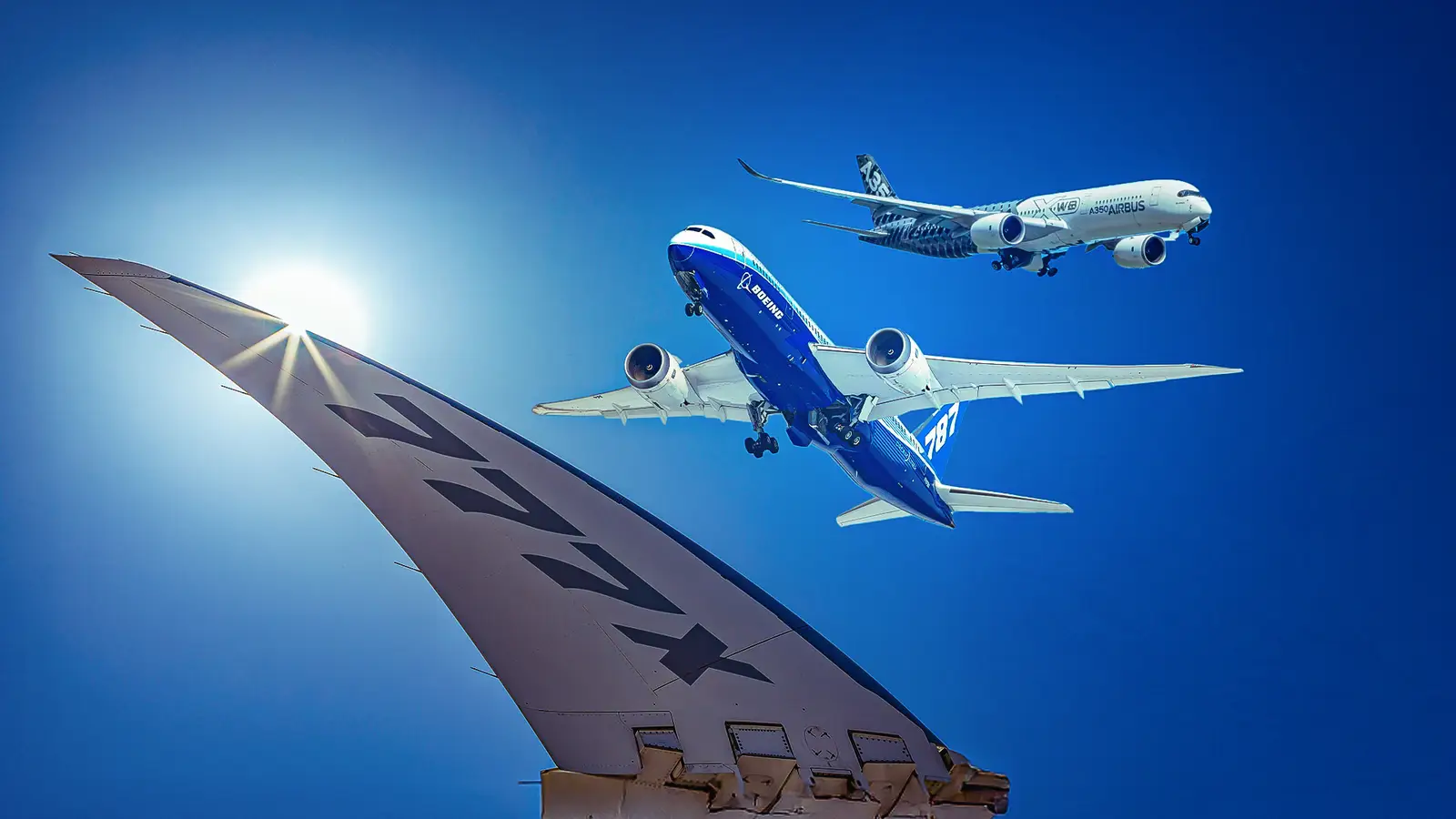Copyright Simple Flying

The Boeing 777X is nearing its entry into service following a long-delayed development and certification journey. The long-haul widebody will become the world's longest commercial aircraft when it starts flying, posing a significant challenge to other widebody aircraft in service today. The 777X was launched to offer airlines a high-capacity, long-range replacement or addition to their long-haul fleets, replacing older 777 models and other large aircraft, like the 747 and A380. But where exactly will the 777X fit into the widebody aircraft market? The stunning success of the Airbus A350 family and the ever-popular Boeing 787 Dreamliner program make it a highly competitive market. The 777X, particularly the longer 777-9, may be in a category of its own in terms of twinjet capacity, but many airlines will be drawn to the versatility of the A350 or 787 as an alternative. Can all of these widebody aircraft types successfully co-exist? The Latest Widebody Aircraft: The 777X The Boeing 777X is the next series in Boeing's acclaimed 777 family, featuring even more capacity and range to add to its efficiency upgrades. Equipped with distinctive folding wingtips and massive GE9X engines, the 777X can deliver up to 12% lower fuel burn per seat than previous-generation 777 aircraft. The 777X will come in two variants — the 777-8 and 777-9 — with the latter model making up the bulk of Boeing's current orderbook. The 777-9 has a typical capacity of 426 passengers in two cabin classes, putting it well ahead of the A350 and 787. While the 777-9's range of 7,285 NM (13,500 km) may lag behind the competition, the shorter 777-8 was developed for ultra-long segments in mind, with a maximum range of 8,745 NM (16,190 km), pushing it more into A350 territory. Formally launched in 2013, the 777X should hopefully enter service in 2027 if the planemaker's latest schedule is adhered to. This means it will be entering commercial service more than a decade after the A350 made its debut, and over 15 years after the 787 Dreamliner entered service. But although the 777X is at least a decade younger than its competition, there will be significant overlap in the service life of each aircraft type. How Will The 777X Compete With A350 And 787? The 777X occupies a niche position between the A350/787 and the 747/A380 in terms of its capacity. Its most direct competition would be the stretched A350-1000, but the two aircraft have key differences that prevent them from being a like-for-like. The A350-1000 has a lot more range than the 777-9, but the 777-8 closes this gap at the expense of capacity. More importantly, the 777-9 promises space for 426 passengers across two cabin classes, likely dropping to around 350-370 for airlines with three-class cabins, which is above the 330 seats typical three-class A350-1000 operators today fly with. Boeing does not view the 777X and the 787 Dreamliner as competitors, as even the 787-10 won't come near it in capacity. The 787 Dreamliner was designed with efficiency in mind and is thus an ideal and versatile aircraft for point-to-point networks, while the 777X is best suited to high-density routes. This makes any overlap in orders far less likely than an airline considering a capacity-hauler like the A350-1000. The largest Dreamliner is the 787-10 model, which typically carries 336 passengers, still 60 seats short of the 777-8's 396 passengers. If we consider the 777-8, there is more of a clash in potential markets, particularly with the A350-1000. The 777-8 was developed as the longer-range variant of the 777X family, capable of flying over 8,700 NM. But this is precisely what the A350-1000 was built for — entering service in 2018 off the back of the A350-900 three years earlier, many airlines have opted for the Airbus long-range twinjet as their flagship aircraft. Emirates And Qatar Airways No analysis of the 777X would be complete without a special look at the type's two main future operators, Emirates and Qatar Airways. Emirates is the world's largest 777 operator with almost 130 active passenger 777s today, and its huge 777X commitment is essentially a like-for-like replacement. It also operates a fast-growing A350-900 fleet, with over 10 aircraft delivered as of October 2025. Emirates has a total order for 65 A350s, which will accommodate up to 312 passengers, with 32 business, 21 premium economy and 259 economy class seats. Qatar Airways also has a large fleet of over 60 777s, which are still relatively youthful with an average age of under 13 years old. The Qatari airline has opted for both the 777-8 and 777-9, which will fly alongside its extensive A350 and 787 Dreamliner fleet. Qatar intends each arriving 777X to be a direct replacement for older 777-200LR and 777-300ER airframes, rather than growing its overall fleet size. Qatar's commitment to the 777X also includes the freighter variant. Its order consists of 60 777-9s, 24 777-8s and 10 777-8F. The 777X will feature Qatar Airways' upcoming Qsuite Next Gen business class product, which will make its debut on the 777-9. With Lufthansa waiting as the 777X's launch customer, Boeing has pushed its delivery schedule for the 777X back to early 2027. With Qatar Airways at one point vying to be the launch customer, its position in the delivery queue won't be far behind Lufthansa, nor will Emirates'. Dual Or Triple Operators The 777X has so far attracted orders from a handful of airlines — this includes Air India, All Nippon Airways, Cathay Pacific, China Airlines, Emirates, Ethiopian Airlines, Etihad Airways, IAG, Korean Air, Lufthansa, Qatar Airways, and Singapore Airlines, as well as cargo commitments from Cargolux and Silk Way West Airlines. Several of these airlines already operate the A350 and 787 Dreamliner, so we are going to see multiple dual and even triple operators once 777X deliveries start ramping up. Lufthansa is set to be the first of these triple operators, with the German carrier currently flying a large A350-900 and a growing 787-9 fleet. Qatar Airways will also be a triple operator with a sizable A350 and 787 fleet, along with Air India, British Airways, China Airlines, Ethiopian Airlines and Korean Air. Boeing has attracted over 500 firm orders for the 777-8 and 777-9, but it may be concerned about how many viable future customers are out there. The bulk of its orders come from a select few customers, so the success of the program can depend heavily on just one or two airlines, much like what happened with the A380 and Emirates. Orders Keep Coming For A350 And 787 While both platforms are now over a decade old, strong demand across the world remains for both the A350 and 787. Major orders for these aircraft within the past year include Qatar Airways' order for 130 Dreamliners and an IndiGo commitment for up to 60 A350 jets. 2025 has been one of the best-selling years in the 787's history, while orders for the A350 have been strong in the post-pandemic era. The A350 and 787 Dreamliner are among the most modern commercial jets in service today and essential for most carriers with a long-haul network. While lacking in capacity compared to the 777, 747 and A380, they are versatile in their network deployment and cover a similar range with strong seat economics. For this reason, many carriers have invested heavily in the A350 and 787 rather than waiting around for the 777X. The A350 and 787 are in full production and there are significant backlogs for both aircraft. For Airbus, its backlog of A350 orders exceeds the number it has already delivered, while Boeing still has over 1,000 Dreamliners yet to deliver. Future 777-8 Appeal While it is still early days for the 777X program, the vast majority of orders Boeing has secured are for the larger 777-9 variant. Some of this is due to the 777-8's later expected entry date, with Boeing advising an "end of the decade" entry for the 777-8. Of the planemaker's 500-plus commitments for the passenger versions of the 777X, over 460 have been for the 777-9, with the 777-8 securing just 43 firm orders so far. The main appeal of the smaller 777X variant is its superior range on the 777-9, adding almost 1,500 NM of range to open up ultra-long-haul city pairings. However, this puts the 777-8 in direct competition with the A350-1000, and demand for the Airbus widebody is growing.



